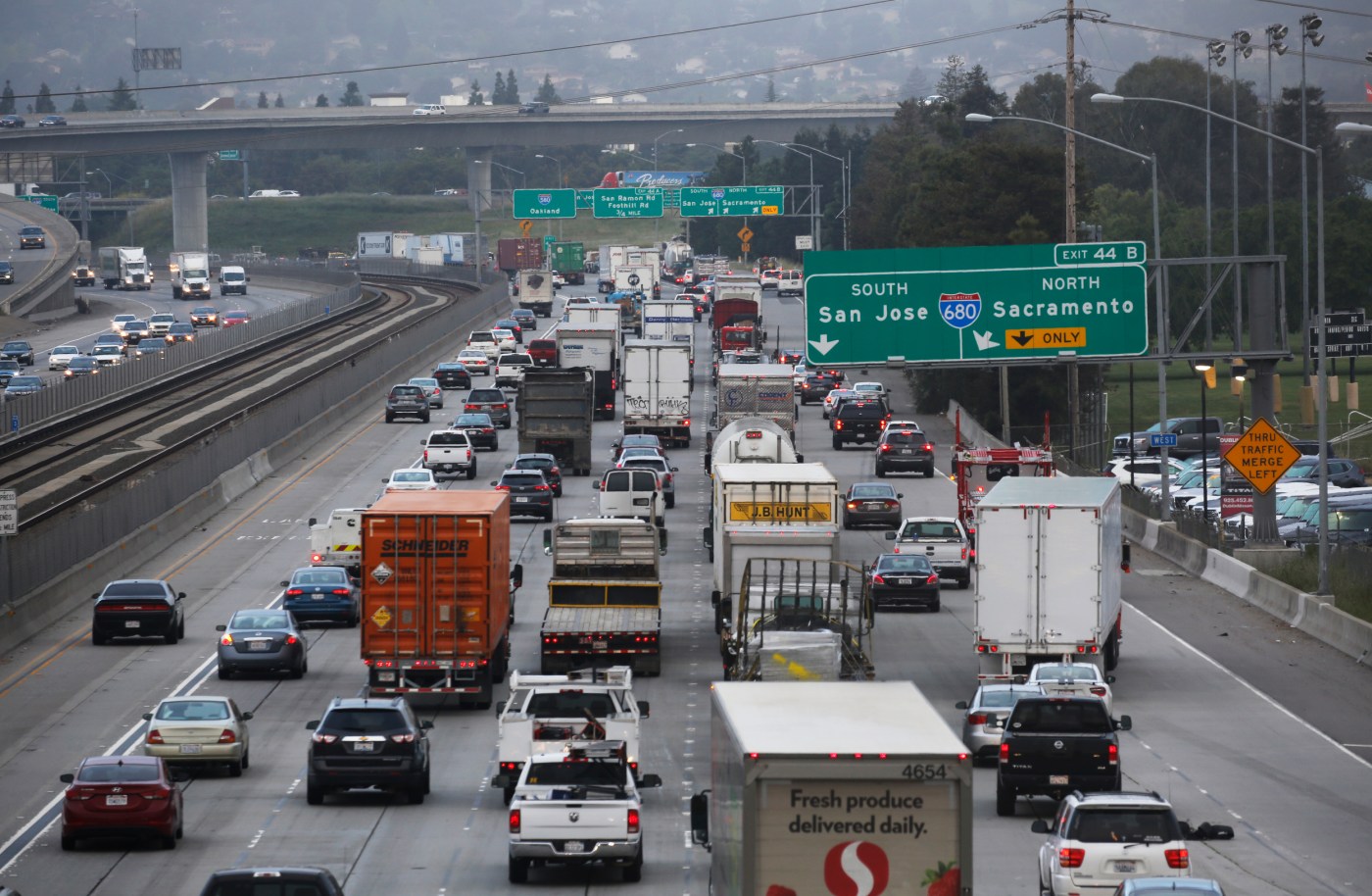
Gov. Gavin Newsom’s return-to-office plan, announced in March, would double days in the office for close to 90,000 state employees. It would push these office workers onto California’s roadways and dump more than 230 million additional pounds of CO2 into our atmosphere each year.
That’s enough greenhouse gas to fill 23,000 hot air balloons. If implemented, the plan would also prompt state workers to burn more than 11,700,000 gallons of additional gasoline annually. That’s enough to fill a line of gasoline tanker trucks close to 17 miles long.
Evidence supporting telework’s advantages is substantial. The practice boosts productivity, reduces freeway congestion, lowers office costs, reduces air pollution, and enhances employee morale.
Not surprisingly, Newsom is now running into opposition. Earlier this month, a bipartisan group of 17 State Assembly members asked him to delay his plan until a California State Auditor report evaluates the costs and efficiencies of telework. Multiple unions representing state workers have also filed lawsuits alleging his order violates labor laws.
Arguments for return-to-office would need to be compelling to convince voters and lawmakers that Newsom’s about-face is the better policy for the state and its workers.
Reasoned argument, however, is in short supply from many leaders who push return-to-office, notes Nick Bloom, a Stanford University economist who studies teleworking.
Return-to-office advocates use “phrases like ‘Our conviction…’ or ‘We believe…,’ Bloom notes. “(It’s never) ‘Data shows.…’”
Newsom has said that “collaboration improves” when workers spend more time in the office.
The hard light of science, however, suggests a blend of in-office and work-from-home — commonly called “hybrid,” — delivers the best results.
A 2024 experiment published in Harvard Business Review found hybrid policies increase profits and reduce turnover compared to the traditional five-days-in-office per week.
Another 2024 study compared worker performance on days at home and in-office. It charted a 12 percent increase in productivity while at home — likely due to fewer distractions.
What about the teamwork and collaboration that supposedly increases in the office — at least according to Newsom?
Related Articles
Walters: A Newsom run for White House would be a rocky ride
Trump lawyer: Courts have no power to stop National Guard deployment in California
Who should pay for Prop. 36, California’s new tough-on-crime law?
Trump administration, California head to court over National Guard use today. Watch the hearing here
Can President Trump take over the California National Guard? Appeals court takes up battle next
The same study found productivity peaks with a three-days-from-home, two-in-office arrangement. This 3:2 hybrid policy — the current policy Newsom would reverse — is a “sweet spot” for productivity and collaboration, Bloom concludes.
Another Harvard study backs the superiority of hybrid telework policies.
“Being in the office five days a week provides no distance or quiet time… it reduces creativity,” Bloom writes of this study.
If Newsom’s plan lacks supporting evidence, what’s driving him to push for its July 1 implementation?
The idea that government workers are lazy workers is a distortion and cultural bias that powered return-to-office mandates for federal workers and Texas state workers. Bringing California workers back to the office, we can speculate, might have occurred to the governor during his recent political “soul searching.”
Work-from-home advocates should remind Newsom that telework for state employees is endorsed and encouraged by California legislation passed in 1990, and by Caltrans’ 2024 California Transportation Plan (CTP) 2050 — a comprehensive roadmap to reducing greenhouse gas emissions, freeway congestion, pollution and vehicle miles travelled.
Given the evidence, we can hope that Newsom — or his successor — will place California back on course as a world leader in telework.
Erik Skindrud is an employee with Caltrans District 7’s Office of Public Affairs in Los Angeles. The views in this column are his.